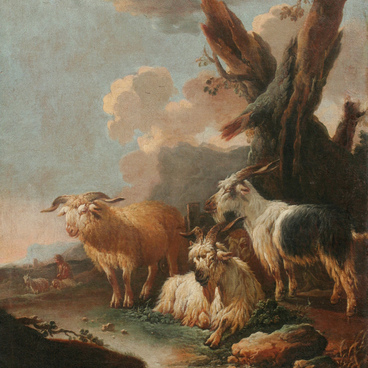One of the most popular genres of 17th-century Dutch painting was the portrait. The increased importance of personality in the new bourgeois society contributed to the flourishing of realistic portraiture. The richest burghers wanted to see themselves depicted with imposing appearance, indicating their wealth and integrity. The demand for portrait paintings was very high. Portraits of small sizes, designed for close-up viewing in small rooms of a burgher house, became popular. Those were generally half-length portraits.
The work of Jan Anthonisz van Ravesteyn “Portrait of the Dutch Ambassador to France — Florent II, Count de Palandt” from the collection of the Primorye Art Gallery is an excellent example of the Dutch portrait genre.
Jan Anthonisz van Ravesteyn represents the Dutch school of painting. He was born around 1572 in The Hague. It is not known where he studied art, but he was a follower of the Delft portrait painter Michiel van Mierevelt, whose studio produced several thousands of portraits. In 1598, Ravesteyn joined the Guild of Saint Luke in The Hague, and in 1656, became one of the founders of his own society of artists known as Confrerie Pictura. The society existed until 1849 and was aimed at protecting the Hague artists and strengthening the ties between the members.
Ravesteyn’s work covers two of the most interesting periods in the history of Dutch art — those of the formation and the heyday of realism. The “Portrait of the Dutch Ambassador to France — Count Florent II de Palandt” reflects the specific characteristics of both stages. On the one hand, this is sober realism. With scientific accuracy, without embellishing anything, the artist conveys all the features, being equally attentive to elements of both primary and secondary importance. The artist does not try to hide the fact of posing, or, more precisely, he does not yet know how to overcome the impression produced on the model by prolonged posing. On the other hand, there are already features that characterize portraits of the mid-17th century — such as chiaroscuro modeling, which took the place of the cold and graphic outlines of earlier portraits.
The work of Jan Anthonisz van Ravesteyn “Portrait of the Dutch Ambassador to France — Florent II, Count de Palandt” from the collection of the Primorye Art Gallery is an excellent example of the Dutch portrait genre.
Jan Anthonisz van Ravesteyn represents the Dutch school of painting. He was born around 1572 in The Hague. It is not known where he studied art, but he was a follower of the Delft portrait painter Michiel van Mierevelt, whose studio produced several thousands of portraits. In 1598, Ravesteyn joined the Guild of Saint Luke in The Hague, and in 1656, became one of the founders of his own society of artists known as Confrerie Pictura. The society existed until 1849 and was aimed at protecting the Hague artists and strengthening the ties between the members.
Ravesteyn’s work covers two of the most interesting periods in the history of Dutch art — those of the formation and the heyday of realism. The “Portrait of the Dutch Ambassador to France — Count Florent II de Palandt” reflects the specific characteristics of both stages. On the one hand, this is sober realism. With scientific accuracy, without embellishing anything, the artist conveys all the features, being equally attentive to elements of both primary and secondary importance. The artist does not try to hide the fact of posing, or, more precisely, he does not yet know how to overcome the impression produced on the model by prolonged posing. On the other hand, there are already features that characterize portraits of the mid-17th century — such as chiaroscuro modeling, which took the place of the cold and graphic outlines of earlier portraits.



